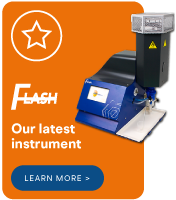Advantages and Disadvantages: When is the flame photometer the best choice?
- The BWB Team
- May 15, 2024
- 3 min read
Updated: Oct 28
Flame photometry is the preferred technique for detecting and reporting inorganic metals from the alkali earth and alkali rare earth groups, most often including sodium, calcium, potassium, lithium, and barium. These elements lend themselves to this sort of analysis because of the excitability of their ions in a controlled flame causing them to produce highly accurate spectra (aka characteristic wavelengths) which identifies the substance, and quantifies it, too.
The method has both advantages and disadvantages, like any technique, so let’s compare and contrast those abilities and shortcomings.
Substance Detection

Flame Photometry is very sensitive, able to detect even trace amounts of sample components. This makes the technique extremely valuable for environmental monitoring, clinical analysis, and tracking industrial processes, such as nutritional values in foods. We should remember that while it is specific for certain elements, inadequate set up or elderly equipment may hinder selectivity in the case of closely related elements.
On the other hand, it can only reliably detect the lemon-lime metals in this chart (surrounded by red), and some of those require many significant changes and accommodations. Beyond sodium, calcium, potassium, lithium, and barium an ordinary stock FP simply won’t do the job. Luckily, those five special metals are some of the most important ones we need to know about, so the flame photometer is an excellent tool across a wide spectrum of processes and industries.
Preparing Samples
FP samples need to be in solution form for analysis. Complex samples containing high levels of impurities can require extensive and time-consuming preparation to ensure accurate results. Ultimately, however, in food analysis (or any continuous process, such as water treatment) you establish parameters and know the variability of samples with a high degree of accuracy. This makes the process much faster than single sample analysis.
Need for Speed
Clinical labs love the speed for bio-assays whether research is hanging in the balance or quality of life is compromised and can be fixed easily with a supplement or chelation. Getting the job done fast is one of the most powerful reasons that research labs love flame photometry.
Simple Operation
Compared to alternate methodologies, FP makes analysis accessible to a broad range of users, facilitating routine analysis without the need for extensive training, which in any case is both fast and simple. The instrumentation is straightforward and internal automation eliminates most of the opportunities for errors. The operation is so easy that it can be automated for continuous processes, or handled by a trained technician for multiple small lots.
Bulk Monitoring
This leads us to how flame photometry is ideal for bulk continuous analysis. In sewage treatment, where these targets must be tracked, fines for effluent contamination are potentially mind-numbing and can result in operators facing legal action or imprisonment in many jurisdictions. So, both real world and lab environments use flame photometry for regular monitoring of specific elements in various samples.
£et’s $ave Єxpenses
Compared to other processes that could provide the same result, flame photometry is downright cheap. You don’t need disposable columns, vacuum chambers, and all the impedimenta of Spectrophotometry, and don’t face the problem of “one test for each substance”. FP allows you to test for all five of the common substances simultaneously, making it hundreds of times faster than alternate methods, with equivalent accuracy, at just a fraction of the price.
Additionally, the sheer time savings are unassailable. It might take an hour to set up one spectrophotometer test, whereas a technician could complete 60 FP tests in that time. An automated single system could easily double that to 120 samples per hour. And, of course, in contrast to more expensive and complex devices, maintenance costs are negligible in comparison.
Destructive By Nature
With ultra-small samples it could be problematic since the sample itself is destroyed by the analysis, but most people have a lot of wastewater, blood, food on a production line, etc., so destruction is not a powerful element. Analysing Moon rock? Sure, you’d want to spend the time and money to make sure the sample is preserved, but for most purposes, this is unimportant.
The Takeaway
Flame Photometry is a valuable technique for substance analysis in many areas. Its advantages and disadvantages must be weighed as it is considered for your particular usage. It is economical, fast, inexpensive to operate, has a small learning curve, and is highly reliable. Nowadays, it is even entirely portable for use in the field.
Give us a call today and let us help you figure out if it is a good fit for your business. We’d love to hear from you!




